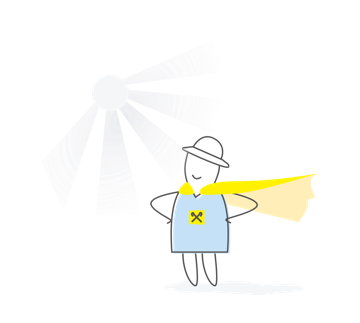How to correctly "Ukrainize" a website
Big changes are coming. In May 2019, the Verkhovna Rada passed a law according to which the main language version of sites for users from Ukraine should be Ukrainian. Leaving the Ukrainian version only for image and with minimal content will not work. And simply translating your site into Ukrainian will fail without losing traffic and customers. What to do from the point of view of Internet marketing, says Anastasia Ovcharenko, head of the web studio TessLab
If there is a Ukrainian version
For existing sites, “Ukrainization” means the need to download the main version in Ukrainian. That is, when entering a site not from search, the default site should be loaded in Ukrainian. It is believed that if the sites have a language switch and the content is the same, then these sites are the language versions of one. When entering from a search for a query specified in a particular language, content in that language should be opened.
“Even if you now have the Ukrainian version, but it does not load immediately by default when you open the site, then you also need changes. It’s impossible to simply swap language versions (that is, transfer content from a subdomain, for example, to the main domain), so as not to lose traffic, since the indexed content will not coincide with the one on the site, and all promotion will have to be started again, explains expert problem.
The tendency to create sites in more than one language has appeared in Ukraine for a long time. We are all used to seeing a language switch in the header of sites. After all, if we want to capture search queries that are set by users in their native language, we need a website in the language of this user. A multilingual site can be implemented in different ways. Language versions can be located on different domains (site.ua, site.com, site.ru), on subdomains (site.ua, ru.site.ua, en.site.ua), can be located in subfolders (site.ua , site.ua/ru, site.ua/en). But you always need to answer your question, what happens when a user switches between language versions? Does he go to the main page of the site in the selected language? Or does he stay on the same page, but already sees content in another language?
The easiest option is to locate the user and redirect him to the appropriate version. This can be done by the developers of the site, web studios who have your site on tech support, or those specialists who can make changes to it. You can add an additional pop-up window with a clarifying question (as is now the case for determining a city).
If the site is Russian-language
Small businesses need to make the Ukrainian version of the site within 18 months, if it has not already been, containing at least 70% of the content of the main site. “In no case can your website focused on a Russian-speaking audience be simply translated into Ukrainian, otherwise you will lose all your customers,” Ovcharenko explains. - The new Ukrainian-language version is being made in addition to the existing Russian, and not in its place. Do not just translate content, create a new language version! So far, slowly, as this requires certain cash and labor resources. After all, creating a language version is not only the work of a translator, but also the work of programmers and seo specialists.”
But the law in the next year and a half will force news and e-commerce projects to create content in the Ukrainian language, and this will create additional Ukrainian traffic, the expert said. “Traffic for Ukrainian requests is growing, according to statistics published by Google in 2018, but since few sites are now ready to satisfy these requests, for many they are not very targeted. Therefore, the sooner your site receives texts in Ukrainian, the more search queries and clicks on them you can receive in the future, ”Ovcharenko analyzes. Therefore, in a couple of years, your language version even created now under the pressure of the law will begin to bring its customers. Therefore, the expert recommends that customers look at the development of the Ukrainian version as access to a new and still unoccupied market.
Important for promotion
The entire semantic core for the new version of the site must be assembled separately. Everything that has been done for the existing version, from the point of view of search engine promotion, is important to leave! We collect and register the link addresses, page headers, keywords and page descriptions for the new version (after all, this is actually a new site), and for the existing working site we leave those already registered. For working sites, you need to save the url as much as possible, since this is the link that users follow from various sites where you could leave this link. Search promotion of a previously non-existent Ukrainian version must be done anew. Often, SEO studios have batch offers for multilingual sites. At a minimum, users coming from Ukrainian IPs are redirected to the created Ukrainian site.
If you have an online store
The most difficult job is for online shopping. The most common accounting program with us is 1C. Its feature is the maintenance of goods in one language. Some 1C programmers expose this as an insurmountable obstacle for multilingualism, and you have to start two catalogs with the same product, but with descriptions and names in another language. The danger of this method is that then it is almost impossible to make a multilingual site, when switching languages on which the user will remain on the same product that looked in the source language. This is inconvenient and often leads to a decrease in site conversion. Therefore, it is necessary to enter descriptions in the second (third and so on) language by properties, and not by new goods. And then this problem is solved on the side of the site, by developers.
The law does not enter into force right now, we have 18 months to prepare. So, almost everyone who wants to have time to choose implementation options, make language versions.















